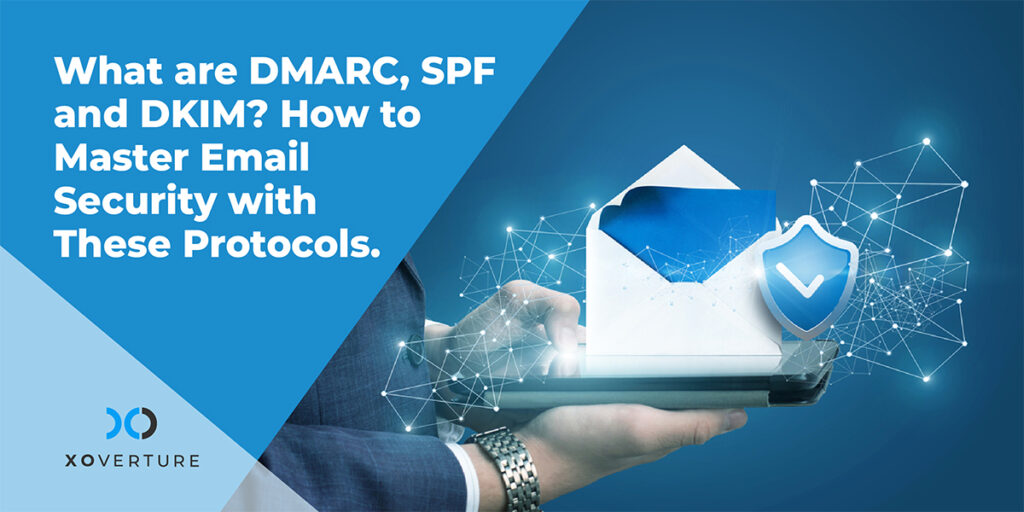Have you ever thought about giving your emails an extra layer of security and ensuring they only reach the right folks? Well, if yes, say hello to DMARC, DKIM, and SPF – the champions of email authenticity. They are like the guardians of your emails, helping in ensuring safety and better email deliverability. All of these champions reside within the Domain Name System (DNS) of your website. However, setting up DMARC, SPF, and DKIM is a bit tricky and complex process, but totally worth it to make your email life safer and smoother.
In this post, we’ll discuss what DMARC, SPF, and DKIM are. How to master email security with these protocols.
What is DMARC?
DMARC is known as Domain-based Message Authentication, Reporting, and Conformance. It’s an efficient way to prevent spammers, phishing attacks and email spoofing. DMARC also ensure that your email gets to the right audience without any tampering. This authentication protocol serves three main objectives:
DMARC teams up with DKIM and SPF, two other security measures, to give emails all the required capabilities. It checks if the “from” address in an email matches the domain it claims to be from. This helps stop tricksters who send fake emails or try to intrude with the aim of stealing information.
Here’s what DMARC does in simple terms:
Double-Checking Protection: DMARC makes sure both DKIM and SPF work together to ensure your email protection. It verifies if the sender’s address matches the domain in the email’s technical parts.
Authentication Guiding Responses: It guides email systems what to do when email doesn’t pass the security checks. Should they send it to the inbox, mark it as suspicious, or something else.
Sending Reports: It sends reports to email receiver informing the sender about emails that pass or fail the security checks. This way, the sender knows what’s happening with their emails.
So, DMARC is A powerful protection that ensures emails are genuine and trustworthy.
What is SPF?
Sender Policy Framework aka SPF is an email authentication protocol developed with a motive to identify and avert email spoofing. It allows domain owners to define which mail servers have permission to send emails using their domain.
This is achieved by creating a list of approved sending IP addresses in the domain’s DNS records. When an email arrives, the recipient’s email server refers to the SPF record of the sender’s domain. This helps verify if the sending server is authorized to send emails on behalf of that domain. If the sending server is not recognized, the email could be marked as doubtful or turned away.
What is DKIM?
DKIM stands for DomainKeys Identified Mail. It is an email authentication technique that uses a digital signature to inform the email recipient that the message was sent and authorized by the domain owner.
When an email bears a legitimate DKIM signature, it signifies that the email’s content hasn’t been tampered with. Although DKIM signatures are typically invisible to users, server-level validation is performed. By combining DKIM with DMARC or SPF, you can safeguard your domain from deceitful emails originating from domains mimicking your brand.
How to Master Email Security with DMARC, SPF, and DKIM?
Spam and phishing emails are one of the most used and effective approaches for cyber attackers to break into systems. When a person gets an email from untrusted/suspicious sources and clicks on it, it gives an open & tempting spot for hackers to play with your data. These situations may lead to big problems, like system chaos, data breaches, stealing vital information and taking over accounts for financial benefits. But here’s a secret not everyone is aware of: the top–level safety, companies need not one, not two, but three special tools -DMARC, SPF, and DKIM to stay safe and protected. Now, let’s understand why they are essential:
Stay Protected with Extra Security: To make sure you don’t fall into the trap of hackers; you need to rely on more than one tool. Moreover, one tool isn’t sufficient to ensure overall security. Each tool serves a unique purpose, and their combined effort forms a powerful defense.
Suitable for Most Businesses: Whether you’re in small or medium size businesses, DMARC, SPF, and DKIM are a winning trio for all. They unite against email threats and work as a team to boost security and prevent incidents of data breaches.
Protection Against Misleading Tactics: These tools help protect your data against cyber hackers, bullies and attackers. These three protocols work efficiently as a team to ensure you’re safe from malicious emails and their troubles.
Provide Effective Results Together: DMARC, SPF, and DKIM are email champions, they provide effective results when they team up. DMARC verifies, SPF lists trusted senders, and DKIM signs emails securely. Together, they form a strong defense, ensuring emails are safe and protected.
So, remember, having DMARC, SPF, and DKIM isn’t extra – it’s the ultimate way to stay safe against malicious email and their troubles.
The Bottom Line:
Email authentication isn’t a walk in the park. Having deep knowledge of the three key methods (DMARC, SPF and DKIM) can help to set up a reliable email security measure.
However, keep in mind that although these protocols are greatly effective to ensure your email security, they might not entirely eliminate phishing or spoofing attempts. Staying up to date with the latest technology, practices and emerging threats can help you to stay informed about protentional method and tricks of hackers. This approach is useful to establish a robust defense system to stay one step ahead of hackers.




